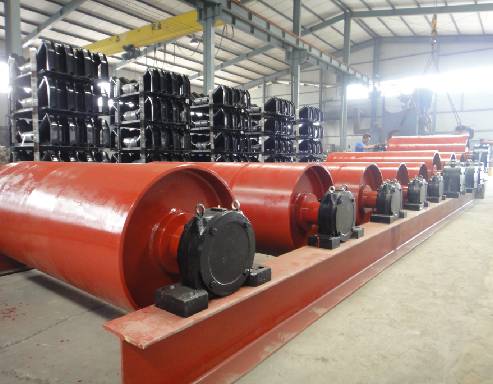 Afrikaans
Afrikaans  Albanian
Albanian  Amharic
Amharic  Arabic
Arabic  Armenian
Armenian  Azerbaijani
Azerbaijani  Basque
Basque  Belarusian
Belarusian  Bengali
Bengali  Bosnian
Bosnian  Bulgarian
Bulgarian  Catalan
Catalan  Cebuano
Cebuano  Corsican
Corsican  Croatian
Croatian  Czech
Czech  Danish
Danish  Dutch
Dutch  English
English  Esperanto
Esperanto  Estonian
Estonian  Finnish
Finnish  French
French  Frisian
Frisian  Galician
Galician  Georgian
Georgian  German
German  Greek
Greek  Gujarati
Gujarati  Haitian Creole
Haitian Creole  hausa
hausa  hawaiian
hawaiian  Hebrew
Hebrew  Hindi
Hindi  Miao
Miao  Hungarian
Hungarian  Icelandic
Icelandic  igbo
igbo  Indonesian
Indonesian  irish
irish  Italian
Italian  Japanese
Japanese  Javanese
Javanese  Kannada
Kannada  kazakh
kazakh  Khmer
Khmer  Rwandese
Rwandese  Korean
Korean  Kurdish
Kurdish  Kyrgyz
Kyrgyz  Lao
Lao  Latin
Latin  Latvian
Latvian  Lithuanian
Lithuanian  Luxembourgish
Luxembourgish  Macedonian
Macedonian  Malgashi
Malgashi  Malay
Malay  Malayalam
Malayalam  Maltese
Maltese  Maori
Maori  Marathi
Marathi  Mongolian
Mongolian  Myanmar
Myanmar  Nepali
Nepali  Norwegian
Norwegian  Norwegian
Norwegian  Occitan
Occitan  Pashto
Pashto  Persian
Persian  Polish
Polish  Portuguese
Portuguese  Punjabi
Punjabi  Romanian
Romanian  Russian
Russian  Samoan
Samoan  Scottish Gaelic
Scottish Gaelic  Serbian
Serbian  Sesotho
Sesotho  Shona
Shona  Sindhi
Sindhi  Sinhala
Sinhala  Slovak
Slovak  Slovenian
Slovenian  Somali
Somali  Spanish
Spanish  Sundanese
Sundanese  Swahili
Swahili  Swedish
Swedish  Tagalog
Tagalog  Tajik
Tajik  Tamil
Tamil  Tatar
Tatar  Telugu
Telugu  Thai
Thai  Turkish
Turkish  Turkmen
Turkmen  Ukrainian
Ukrainian  Urdu
Urdu  Uighur
Uighur  Uzbek
Uzbek  Vietnamese
Vietnamese  Welsh
Welsh  Bantu
Bantu  Yiddish
Yiddish  Yoruba
Yoruba  Zulu
Zulu components of belt conveyor system
Components of a Belt Conveyor System
Belt conveyor systems are widely used for material handling across various industries due to their efficiency and versatility. Understanding the components that make up a belt conveyor system is crucial for optimizing its performance and ensuring its longevity. This article will explore the main components of a belt conveyor system, their functions, and the considerations for effective operation.
1. Belt
The belt is the most critical component of a conveyor system, as it transports the materials from one location to another. Typically made from materials such as rubber, PVC, or fabric, the choice of belt depends on the specific application, including the type of materials being transported and environmental conditions. The belt’s strength, elasticity, and resistance to wear and tear are essential for operational efficiency.
2. Conveyor Structure
The conveyor structure provides the framework that supports the belt and other components. Constructed from steel or aluminum, it includes frames, beams, and supports designed for durability and stability. The design of the conveyor structure must accommodate the weight of the materials being transported and the potential forces exerted during operation.
3. Idlers
Idlers are critical components that support the belt along its length. They serve two primary purposes to keep the belt aligned and to reduce friction as it moves across the conveyor. Idlers are typically spaced at regular intervals and come in various types, including troughing idlers and return idlers, each tailored for specific applications. Proper idler selection and maintenance can enhance the efficiency and lifespan of the conveyor system.
4. Pulley
Pulleys play an essential role in the operation of belt conveyors by driving the belt and guiding its movement. The two primary types of pulleys in a conveyor system are drive pulleys and tail pulleys. The drive pulley is powered, typically by an electric motor, enabling the movement of the belt, while the tail pulley supports the return side of the belt. Proper alignment and tension of pulleys are vital to avoid belt slippage and ensure smooth operation.
components of belt conveyor system

5. Drive System
The drive system is responsible for providing the necessary power to move the conveyor belt. Common types of drive systems include electric motors, hydraulic systems, and gearboxes. The selection of an appropriate drive system is influenced by factors such as the load capacity, speed requirements, and overall conveyor length. An efficient drive system contributes to lower operational costs and improved performance.
6. Control System
Modern belt conveyor systems often integrate sophisticated control systems that manage the operation of the entire conveyor. These systems include sensors, programmable logic controllers (PLCs), and variable frequency drives (VFDs) that help regulate speed, monitor performance, and ensure safety. Effective control systems can enhance productivity and prevent potential malfunctions or accidents.
7. Safety Devices
Safety devices are crucial components that protect both the system and personnel. Common safety devices include emergency stop buttons, belt misalignment sensors, and overload protection systems. Implementing these safety measures is essential for minimizing risks and ensuring a safe working environment.
8. Support Structures and Accessories
Additional support structures and accessories, such as skirting, chutes, and guards, also play a role in the functionality of the belt conveyor system. Skirting helps contain materials on the belt, reducing spillage and maintaining cleanliness. Chutes direct the flow of materials onto and off the conveyor, while guards protect personnel from moving parts.
Conclusion
In summary, a belt conveyor system is composed of several vital components, each playing a significant role in the system's overall performance. Understanding the function of each component—ranging from the belt and pulleys to the drive and control systems—is essential for effective operation and maintenance. By selecting quality components and implementing robust safety measures, industries can ensure that their belt conveyor systems operate efficiently and safely, thus maximizing productivity and minimizing downtime. Investing in the right components and understanding their interplay within the system will lead to improvements in material handling processes, ultimately enhancing competitive advantage in the marketplace.
-
Revolutionizing Conveyor Reliability with Advanced Rubber Lagging PulleysNewsJul.22,2025
-
Powering Precision and Durability with Expert Manufacturers of Conveyor ComponentsNewsJul.22,2025
-
Optimizing Conveyor Systems with Advanced Conveyor AccessoriesNewsJul.22,2025
-
Maximize Conveyor Efficiency with Quality Conveyor Idler PulleysNewsJul.22,2025
-
Future-Proof Your Conveyor System with High-Performance Polyurethane RollerNewsJul.22,2025
-
Driving Efficiency Forward with Quality Idlers and RollersNewsJul.22,2025





























